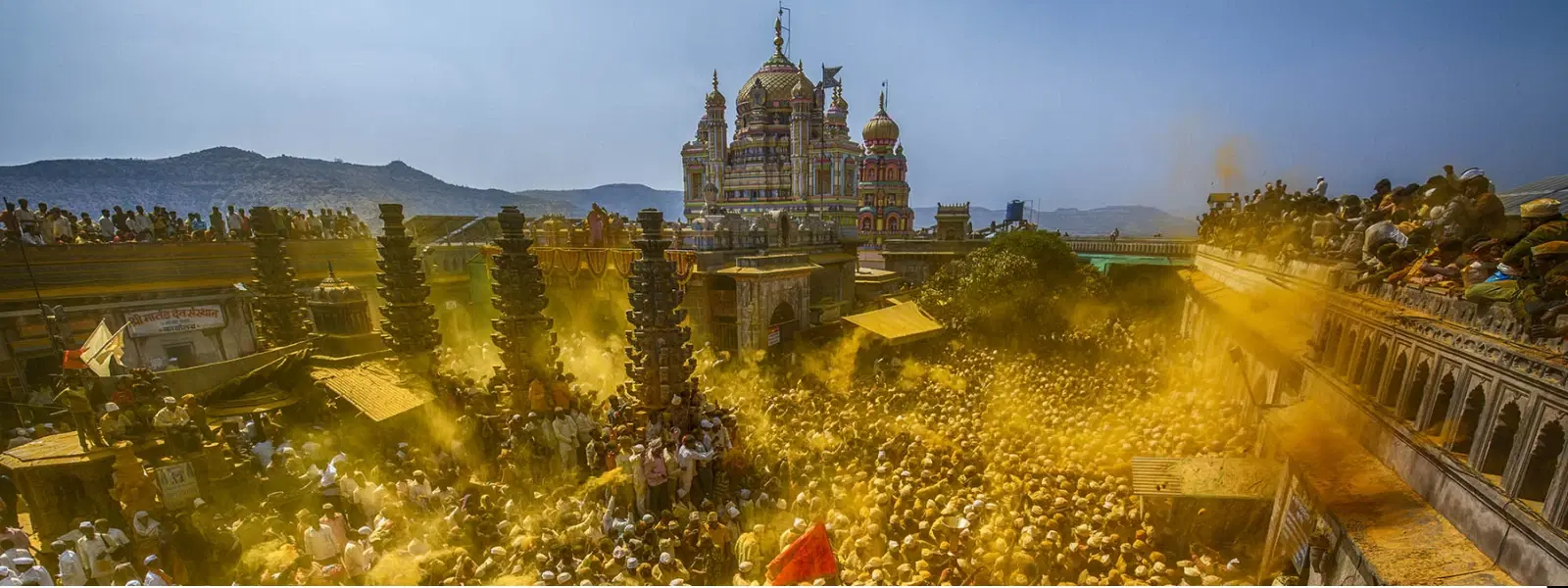
Flights
•04 min read

The grandeur of Puri Jagannath Rath Yatra comes to life as massive, elaborately decorated chariots roll through a sea of devotees, their vibrant colors and intricate carvings echoing centuries of tradition and devotion. This comprehensive guide uncovers the origins, rituals, and cultural impact of this spectacular festival, offering readers a deep dive into the historical and spiritual significance of the Puri Jagannath Rath Yatra.
Legend has it that the Puri Jagannath Rath Yatra began as a divine event linked to Lord Jagannath, whose worship dates back thousands of years. Intricately connected to the revered Jagannath Temple, the festival finds its roots in mythological narratives that have been passed down through generations. The ancient rituals and stories associated with this event underscore its spiritual depth and historical importance.
Over time, the festival has grown from a modest local celebration into one of the most significant pilgrimage events in India. Key milestones, such as royal patronage and increasing public participation, have shaped its evolution. Today, the Puri Jagannath Rath Yatra stands as a testament to the resilience of tradition and the enduring spirit of community worship.
The Rath Yatra symbolizes a spiritual journey that mirrors the path of the soul toward enlightenment. At its core, it is a celebration of unity and devotion, where the three deities—Lord Jagannath, Balabhadra, and Subhadra—embody the divine aspects of life. This vibrant procession not only reaffirms the faith of devotees but also serves as a reminder of the eternal bond between the divine and the human spirit.
For many, participating in the Rath Yatra is a profoundly personal experience. Devotees believe that pulling the chariots or even witnessing the procession can bestow blessings and purify the soul. The festival offers a rare opportunity to engage in active worship, fostering a unique connection with the deities and a shared sense of spiritual fulfillment.
The construction of the chariots is an art steeped in tradition and ritual. Every year, skilled artisans meticulously build the massive structures using time-honored techniques and specific types of wood. Each chariot bears a distinctive name and character, reflecting the rich heritage of the Jagannath Temple and its customs.

The procession itself is a sequence of sacred events. It begins with the ceremonial bathing of the deities, a ritual believed to cleanse them before the grand journey. The 'Gajapati Maharaja', the traditional King of Puri, plays a pivotal role in these rituals, adding an aura of royal grace and solemnity to the proceedings.
Equally significant is the return journey, known as the Bahuda Yatra. This ritual signifies the deities' homecoming, closing the loop of the spiritual voyage. The return is as celebrated as the initial departure, marking the continuation of traditions and the reaffirmation of communal bonds.
The influence of the Puri Jagannath Rath Yatra extends far beyond the borders of India. Celebrations of this festival can be found in cities around the world, reflecting its universal appeal. The Indian diaspora plays a critical role in this global spread, ensuring that the spirit of the Jagannath Temple festival reaches communities everywhere.
Aside from its spiritual dimension, the Rath Yatra significantly boosts local economies. The influx of pilgrims promotes tourism and supports local handicrafts and trades. Moreover, the festival acts as a catalyst for community bonding, bridging socio-cultural gaps and fostering a sense of unity among diverse groups.
Visitors planning a pilgrimage should note that the Rath Yatra usually unfolds over a span of nine days, culminating in the vibrant festivities of the Bahuda Yatra. Early planning is essential to make the most of this experience, as the period surrounding the festival is particularly lively and imbued with tradition.
Attending the festival requires some practical planning. Prospective pilgrims should consider travel arrangements that include safe and convenient transportation, as well as accommodations that cater to a range of budgets—from the wanderer seeking spontaneous adventures to the professional needing seamless and efficient travel planning.
While the Rath Yatra remains the highlight, Puri offers many other attractions. The nearby Konark Sun Temple and the serene Puri Beach provide enriching side trips, allowing visitors to extend their cultural and historical explorations. These sites add depth to the pilgrimage experience, blending spiritual rejuvenation with scenic and leisurely pursuits.

Did you know? Each of the three chariots used in the Puri Rath Yatra is rebuilt every year using specific types of wood sourced from designated forests. This tradition underscores the festival's deep connection to nature and sustainability.
The Rath Yatra typically lasts for 9 days, starting with the chariot procession and concluding with the return journey of the deities.
The Rath Yatra symbolizes Lord Jagannath's annual journey to his garden palace, Gundicha Temple, accompanied by his siblings, Balabhadra and Subhadra.
Every 12 years, a special event called 'Nabakalebara' occurs, during which the wooden idols of the deities are replaced with newly carved ones.
The 12 Yatras refer to various festivals associated with Lord Jagannath throughout the year, with the Rath Yatra being the most prominent.
The Rath Yatra is celebrated to commemorate Lord Jagannath's journey to meet his devotees and to symbolize the divine connection between the deities and their followers.
The Puri Jagannath Rath Yatra is more than just a festival; it is a profound spiritual journey that unites millions in devotion and celebration. From its rich history to its vibrant rituals, the Rath Yatra offers a window into the timeless traditions of India. Understanding its significance and planning a pilgrimage can transform a visit into an unforgettable experience, steeped in ancient wisdom and cultural brilliance.